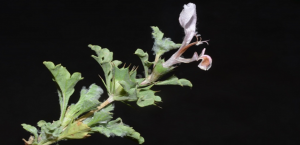Abstract:
Lianas alter the complexity, connectivity, and light levels of tropical forest canopies. Liana abundance is increasing in many tropical forests, which may alter canopy dynamics, diversity, and functioning. Liana density and diversity are high following canopy disturbance (treefall gaps), and thus disturbance may explain increasing lianas. We tested whether canopy disturbance explains increasing liana abundance using a 10-year study (2007–2017) of 117,100 rooted lianas (≥1cm diameter) in a 50-ha plot the old-growth forest on Barro Colorado Island (BCI), Panama. We calculated liana recruitment, mortality, and growth of existing stems from 2007-2017 for all rooted stems and tested whether liana density and basal area increased on the BCI 50-ha plot. We used changes in canopy height rank to classify 20x20m quadrats into four distinct categories. 1) Undisturbed high-canopy forest; the quadrats in the top 20% canopy height rank (n=185). 2) Persistent low-canopy gaps; the quadrats that remained in the lowest 20% canopy height rank (n=151). 3) Recent canopy gaps; the 250 quadrats that lost the greatest canopy height rank. 4) Former canopy gaps (recovering forest); the 250 quadrats with the greatest canopy height rank increase. We bootstrapped spatially independent replicates 4999 times and compared the median model estimates of liana recruitment, mortality, growth, and the change in liana density and BA among the four canopy disturbance categories using ANOVAs. We found that liana density increased 29.2% and basal area 12.5% throughout the BCI 50-ha plot. Most increases were associated with disturbance, particularly in liana-dense, low-canopy gaps, which had far greater liana increases than did undisturbed forest. Clonal stem proliferation following disturbance was responsible for most of the liana increases. Our findings demonstrate that liana abundance is increasing rapidly on BCI and their ability to proliferate via clonal stem production in canopy gaps explains much of their increase in this forest.
Speaker: Dr. Stefan Schnitzer
Affiliation: Marquette University
Time: 9:00 AM, Tuesday, Oct. 17, 2023
Venue: ZOOM 会议平台 会议 ID:312 430 8960 会议密码 PWD:666666
ZOOM
会议 ID:312 430 8960
会议密码 PWD:666666



